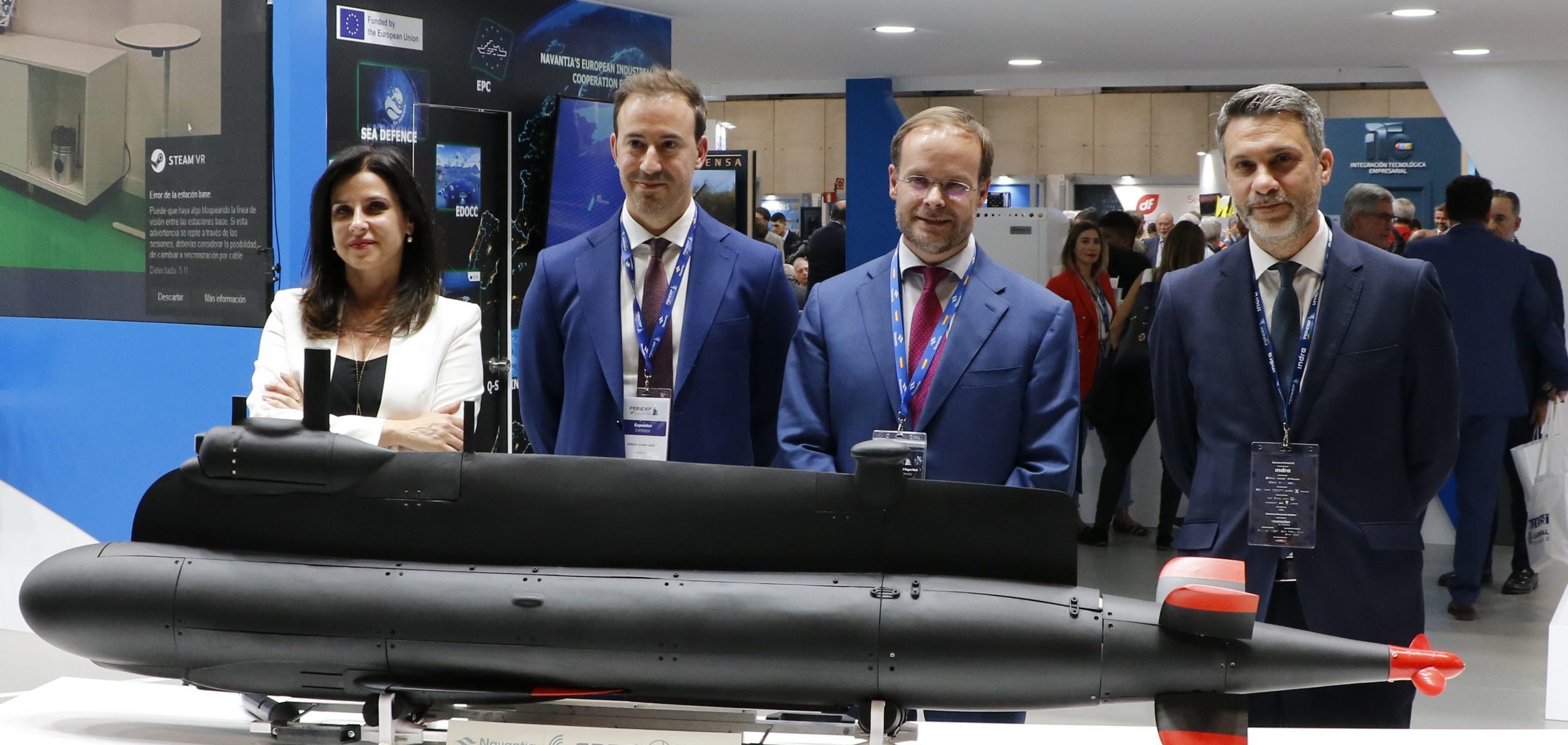
Spanish engineering companies Navantia, SAES, and Perseo have unveiled their plans to create a range of unmanned underwater vehicles (UUVs) equipped with advanced sensors, to enhance exploration and surveillance capabilities in increasingly challenging operational environments.
With a focus on autonomous functionality and leveraging their expertise in sonar technology, underwater communications, and operational concepts, this collaborative effort aims to provide a change in the submarine domain for the better.
These UUVs will be equipped with sensors to undertake exploration and surveillance tasks in highly demanding operational theatres.
SAES, renowned for its nearly 35 years of experience in underwater acoustics and electronics, is set to play a role in this collaboration. The company’s expertise positions it as one of the primary national players capable of providing tactical and mission capabilities to unmanned vehicles.
According to SAES President Joaquín López Pagán, “Our experience in underwater acoustics and electronics positions us as one of the main players in providing autonomy to unmanned vehicles and collaborating in their development to make them truly autonomous.”
Leveraging its knowledge of sonar technology, underwater communications, and operational concepts, SAES aims to contribute to the development of truly autonomous UUVs.
Furthermore, SAES plans to integrate these UUVs with their proprietary systems to provide submarine defence solutions, expanding their business lines and capabilities.
Perseo Techworks, a specialized Spanish company with knowledge and experience in unmanned underwater vehicles, numerical simulation, onboard electronics, rapid prototyping, additive manufacturing, IoT, and artificial intelligence, brings invaluable expertise to this collaboration.
Having actively participated in numerous European projects and national R&D initiatives, Perseo is well-equipped to contribute to developing these advanced UUVs.
An unmanned mine countermeasure mission
At the FEINDEF exhibition, visitors had the opportunity to witness a UUV prototype with unique features capable of fulfilling many missions. The initial focus of development is deploying the UUVs in mine countermeasure missions.
However, the collaboration is also exploring the possibility of leveraging the same technological foundation with minimal modifications to utilize these UUVs as advanced sensors or loitering munitions, highlighting the versatility and adaptability of this project.
According to GlobalData’s report, “Spain Defence Market 2022-2027“, the Spanish naval sector is largely driven by Navantia, a government-owned company, which is the largest exporter of Spanish defence goods, including frigates, offshore patrol vehicles, and amphibious ships.
Navantia also has experience working on USVs for mine warfare, anti-submarine, and surveillance missions. The Spanish company was immersed in two of its R&D projects to develop new unmanned surface vehicles for mine warfare, anti-submarine and maritime surveillance and patrol missions in 2022.
Manned and unmanned undersea warfare systems will register a moderate CAGR of 1.99% during 2017-2027.
A significant driver for the investment in the segment is the growing advances in unmanned underwater vehicles technologies, making them highly effective for underwater surveillance against submarines and mines with a high degree of stealth, according to a GlobalData report on “The Global Undersea Warfare Systems Market 2018-2028“.
A GlobalData Analyst Briefing: Unmanned maritime vehicles: claim they will play a significant role in future naval operations.
They will serve as a force multiplier by supporting and extending the situational awareness of traditional manned naval assets and operating with them in the same battle force while undertaking a number of missions, including laying, detecting and clearing mines and finding, tracking, and engaging adversaries.
These unmanned vehicles will enhance operational capabilities by harnessing technologies, contributing to safer and more efficient missions in increasingly challenging environments.
Large military nations have ordered UUVs in the past few years as their popularity has risen. The US Navy ordered two REMUS 300 unmanned underwater vehicles from HII, and the Indian Navy was developing the use of UUV unmanned underwater vehicles in 2021.




